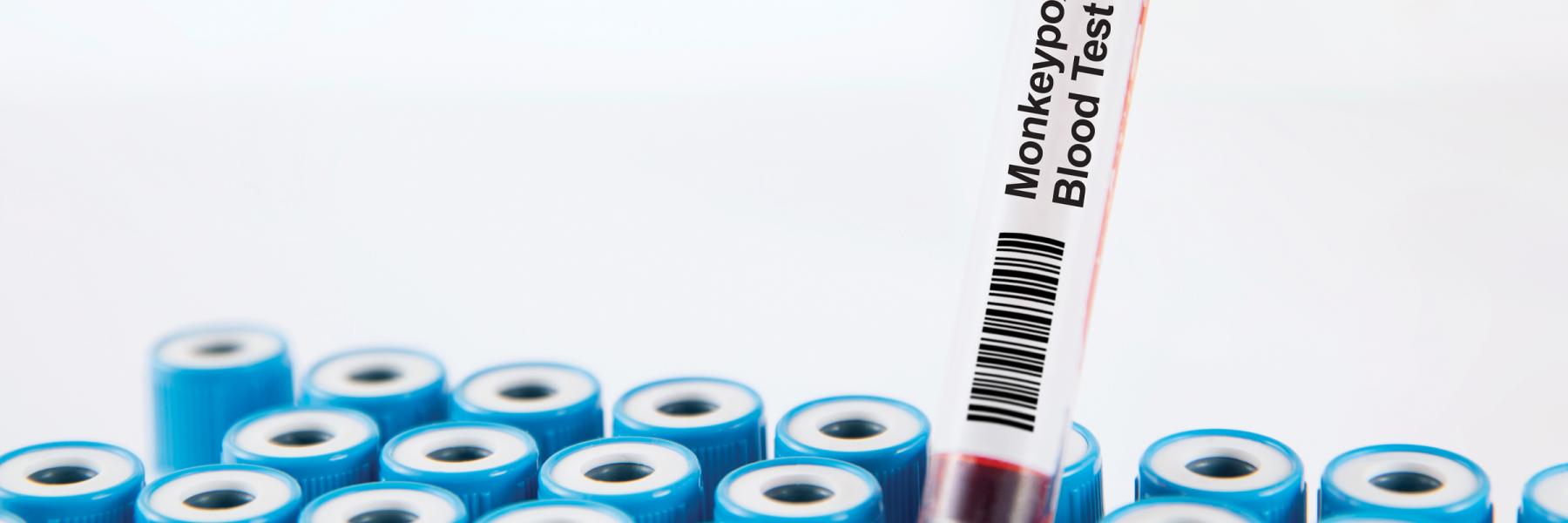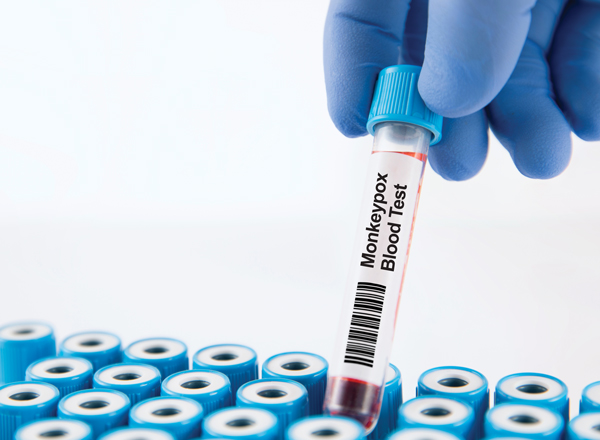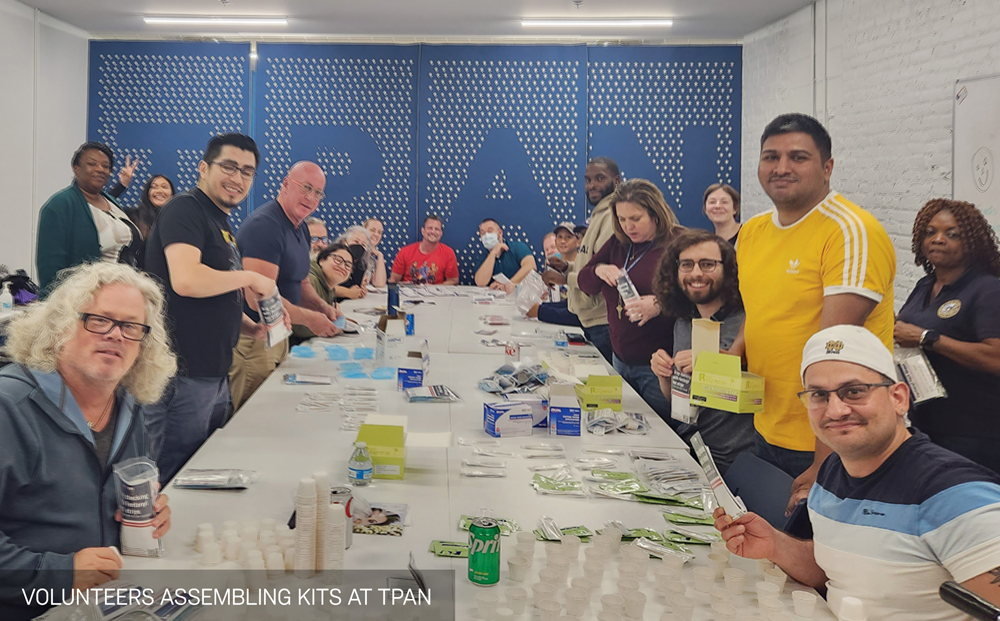
Dolutegravir again found to be safe and effective in pregnancy
A study published online in the New England Journal of Medicine in September found that dolutegravir did better at reducing viral load than other preferred drugs for pregnant people living with HIV.
The research team noted that this was the first study directly comparing the medications on the preferred drug list in U.S. perinatal HIV guidelines.
At the time of delivery, the rate of undetectable viral load was
- 96.7% for people taking dolutegravir
- 89.2% for raltegravir
- 84% for ritonavir-boosted atazanavir
Results for the fourth preferred drug, darunavir, were not provided.
“We think the observed differences are due to dolutegravir’s ability to rapidly decrease viral loads and its ease of use as part of a once-daily regimen that’s available as a fixed-dose combination,” said lead author Kunjal Patel, a senior research scientist at the Harvard T.H. Chan School of Public Health, in a press release.
The observational study looked at pregnancy data from the Pediatric HIV/AIDS Cohort Study here in the U.S. About half of the individuals were already taking HIV medications at the time of their pregnancy. Altogether there were
- 120 individuals on dolutegravir;
- 464 on ritonavir-boosted atazanavir;
- 185 on ritonavir-boosted darunavir;
- 243 on rilpivirine (Edurant, found in Odefsey and Complera);
- 86 on raltegravir; and
- 159 on cobicistat-boosted elvitegravir (found in Genvoya and Stribild)
There were also supplementary analyses from data in the Swiss Mother and Child HIV Cohort Study.
“No clear differences in adverse birth outcomes were observed with dolutegravir-based ART as compared to non–dolutegravir-based ART, although samples were small,” the team reported. Among adverse outcomes the study looked for were preterm birth, low-birth weight, and small size for gestational stage.
DHHS preferred ARVs in pregnancy
The preferred HIV drugs for use in pregnancy, according to guidelines from DHHS (the U.S. Department of Health and Human Services), are:
- the single-tablet regimen Triumeq (consisting of dolutegravir/abacavir/3TC) or one of the following drugs plus a preferred background medication:
- Tivicay (dolutegravir)
- Isentress (raltegravir, must be taken twice daily in pregnancy)
- Norvir-boosted Reyataz (atazanavir/r)
- Norvir-boosted Prezista (darunavir/r, must be taken twice daily in pregnancy)
Dolutegravir is the newest of these medications. The other single-tablet regimens for HIV treatment, which are also newer meds, are not recommended in pregnancy because of lacking or limited data (such as with Biktarvy and Delstrigo) or data showing less efficacy in pregnancy (as with medications that include cobicistat, such as Genvoya and Stribild). The two-in-one single-tablet regimens containing dolutegravir, Dovato and Juluca, don’t have much pregnancy data, but DHHS noted that the separate medications in these pills are approved for use in pregnancy.
Nevertheless, pregnant individuals taking these other medications at the time of conception may not need to switch them—more frequent viral load testing may be all that’s required. See the considerations for individuals already taking HIV antivirals at the time they conceive at bit.ly/pregnancy-guidelines-whats-new. It is recommended, for now, that the long-acting complete injectable regimen Cabenuva be switched in pregnant individuals.
Go to clinicalinfo.hiv.gov for treatment guidelines. Read about the HIV medications at positivelyaware.com/2022-hiv-drug-guide. Pregnant individuals can voluntarily enroll in the Antiretroviral Pregnancy Registry through their provider; go to apregistry.com.
‘Monkeypox’ is out, ‘mpox’ is in
The World Health Organization (WHO) in late November changed the name of the monkeypox virus to “mpox.” “When the outbreak of monkeypox expanded earlier this year, racist and stigmatizing language online, in other settings and in some communities was observed and reported to WHO. In several meetings, public and private, a number of individuals and countries raised concerns and asked WHO to propose a way forward to change the name,” the international agency reported. Both names will be used over one year as “monkeypox” is phased out. For more information, go to bit.ly/3GPwCZv.
Expanding mpox testing
The U.S. Food and Drug Administration (FDA) in September announced it has published new guidance to expand the country’s ability to test for the mpox virus.
“Today’s important actions further aid the monkeypox response by working toward expanding vital testing capacity and facilitating the detection of cases nationwide in an effort to stem the spread of the virus,” said Jeff Shuren, MD, JD, director of the FDA’s Center for Devices and Radiological Health, in a press release. “The policy announced today is intended to support the development of more validated monkeypox tests and expand access to testing.”
The FDA also granted Emergency Use Authorization (EUA) to Quest Diagnostics for a test to detect monkeypox and other viruses.
To subscribe to the agency’s mpox response page, go to fda.gov/emergency-preparedness-and-response/mcm-issues/fda-monkeypox-response.
Most hospitalizations due to mpox were in people living with HIV
Most people hospitalized with severe cases of mpox virus have been gay, bisexual and other men who have sex with men (MSM) who were also living with HIV, and most of them were Black men, according to a recent report from the U.S. Centers for Disease Control and Prevention (CDC).
“Monkeypox and HIV have collided with tragic effects,” said Jonathan Mermin, MD, PhD, in a news release from the agency.
The CDC reported that, “During August–October 2022, CDC provided clinical consultation for 57 hospitalized patients with severe manifestations of monkeypox, most of whom were Black men with AIDS. Delays were observed in initiation of monkeypox-directed therapies. Twelve patients died, and monkeypox was a cause of death or contributing factor in five patients to date, with several other deaths still under investigation.”
CDC advises that, “Clinicians should consider early treatment with available therapeutics for those at risk for severe monkeypox disease, particularly patients with AIDS. Engaging all persons with HIV in care remains a critical public health priority.”
The CDC recommends that all sexually active people with suspected mpox infection be tested for HIV unless they already have a positive diagnosis.
- Forty-seven (82%) of the 57 hospitalized patients were living with HIV.
- Of the 43 individuals, 31 (72%) with a known CD4 count had less than 50.
- Only four of the individuals living with HIV (9%) were on HIV therapy.
Overall, most of the individuals were men (95%), and 68% were non-Hispanic Black. The median age (half of the group were above this number and half were below) was 34 years old, with an age range of 20 to 61 years. Seventeen patients (30%) were treated in the ICU (intensive care unit).
All of the individuals had severe skin infections, as to be expected, but 39 (68%) also experienced severe mucosal lesions. Some had the mpox virus spread to other organs, including the lungs (12 individuals, or 21%), eyes (12, 21%) and brain or spinal cord (four, 7%).
In terms of other conditions:
- three individuals were solid organ transplant recipients
- three individuals were pregnant
- nearly one in four of the individuals (23%) were experiencing homelessness
- two individuals (one of whom was living with HIV) were undergoing chemotherapy for a hematologic malignancy
These are cancers that begin in blood-forming tissue such as bone marrow and in cells of the immune-system. These include leukemia, lymphoma and multiple myeloma.
The 12 deaths represented 21% of the 57 cases, a little more than one in five of the patients.
In terms of treatment:
- 53 (93%) received oral tecovirimat (TPOXX or ST-246), and 37 (65%) received intravenous tecovirimat
- 29 (51%) received the medication vaccinia immune globulin intravenous (VIGIV), and 13 (23%) received intravenous cidofovir
- all of the individuals who received cidofovir or VIGIV also received tecovirimat
Go to the November 4 Morbidity and Mortality Weekly Report (MMWR): bit.ly/3UNfbwE.
Trans-led center receives 340B funding
Arianna’s Center in Fort Lauderdale, which serves a large immigrant base, has become the first trans-led organization in Florida to receive 340B funding. The pharmacy-support program is set to start in early 2023. “We’re helping to lead the way for other trans-led organizations,” said founder and director Arianna Lint. The center will help its clients receive PEP and PrEP as well as hormones in addition to HIV medication. (See Yes, undocumented immigrants can get free PrEP.) Go to ariannas-center.org.
Jeff Berry joins The Reunion Project
Former Positively Aware editor-in-chief Jeff Berry has been named the first executive director of The Reunion Project (TRP), leading a coalition that he helped establish for long-term survivors of HIV.
After 30 years of working for TPAN, the nonprofit HIV services organization in Chicago that publishes Positively Aware—the last 18 of those years as editor—Berry turned increasingly towards advocacy for long-term survivors of HIV. He co-founded The Reunion Project with several other community advocates, holding get-togethers for survivors around the country.
According to their website, “Founded in 2015 by activists living with HIV, The Reunion Project (TRP) is the national alliance of long-term survivors of HIV, collaborating with local and national HIV advocates, providers and researchers. Together, we convene and connect individuals and communities, sharing our experiences of survival and loss while honoring our past, and developing successful strategies for living and supporting one another—today and into the future.”
"I am thrilled to be a part of this great organization, and grateful to the funders who helped make it happen," Berry said in a press announcement. “We are on the cusp of a silver tsunami of people living and aging with HIV who require services tailored to their unique needs. Isolation and other mental health issues have been exacerbated by COVID-19, so there is no time to waste and no better time for renewed focus on the myriad issues facing long-term survivors and people aging with HIV."
Shortly after his HIV diagnosis in 1989, Berry saw an ad for volunteers to distribute Positively Aware during a monthly gathering. He was soon hired as the magazine's distribution coordinator. His talents and skills led the agency to give him increasing responsibilities over the years, including advertising and proofreading—earning him the nickname “Eagle Eye” after catching typos following publication. He led website development efforts at the dawn of the internet era, working his way up until becoming editor-in-chief in 2005. He handled it all with grace and expertise.
"We were honored to support The Reunion Project and know that Jeff and the steering committee will build on the body of work to elevate the voices, experiences, and needs of long-term survivors in our national dialogues around ending the HIV epidemic,” said Marc Meachem, head of U.S. External Affairs for ViiV Healthcare. "I'm excited and encouraged to see the tireless work of a diverse group of long-term survivors evolve from an all-volunteer effort to the naming of a full-time executive director.”
Darwin Thompson, director of Corporate Giving at Gilead Sciences, Inc., said, "We are proud to support The Reunion Project and its network of long-term survivors. Gilead knows the importance of facilitating organic connections and empowerment opportunities for long-term survivors through creative programming. The work of The Reunion Project has been critical to cultivating these safe spaces.”
Berry’s editorials in Positively Aware over the years brought his kindness and light to an often-troubled world seeking solutions. As Lynda Dee, co-founder of AIDS Action Baltimore, put it perfectly, “He’s all Zen.” And that’s a good thing.
Learn more about TRP at reunionproject.net.
HIV law center names new leader
The Center for HIV Law and Policy (CHLP), in New York, has named S. Mandisa Moore-O’Neal as its new executive director. The national organization battles stigma and discrimination, particularly within the criminal justice and public health arenas.
A civil rights attorney, Moore-O’Neal oversaw her Black feminist law and policy practice in New Orleans focusing on advocacy and litigation around HIV criminalization, family law, public accommodations discrimination, and police accountability. CHLP founder Catherine Hanssens will step up from executive director to the new role of chief strategy advisor.
“CHLP has always centered a bold political analysis that expands our collective understanding of systemic oppression against people living with HIV while simultaneously leading the strategies to remedy the oppression,” said Moore-O’Neal in a press release. “I came to know CHLP as a formative partner in our statewide work. Now is the political moment for continued transformative and accountable leadership and that is what I will carry forward.”
Read her brilliant article on abolition and HIV criminalization at positivelyaware.com/issues/september-october-2020. CHLP coordinates the Positive Justice Project, which works state-by-state to change harmful laws.
Sign up for its newsletter at hivlawandpolicy.org.
Judge rules against PrEP
A Texas federal judge ruled in September that requiring employers to provide health coverage that includes HIV prevention drugs is unconstitutional, saying that it violates the religious freedom of a Christian-owned company.
The ruling by Judge Reed O’Connor of the U.S. District Court for the Northern District of Texas could jeopardize the ability of the Affordable Care Act (known as Obamacare) to require which preventive health services and drugs must be fully covered by private health insurance. Under the ACA, employers must provide insurance coverage for drugs prescribed for HIV prevention, known as PrEP. Braidwood Management, Inc., a company based in Fort Worth, filed suit in 2020, charging that requiring the company to offer PrEP “facilitates and encourages homosexual behavior.”
The Los Angeles LGBT Center issued a statement saying, “While the ruling is incredibly disturbing, we first want our community and allies to understand that its scope is currently limited to Braidwood, the Texas employer named in the lawsuit, and its 70 employees. It also undermines the bipartisan plans of the United States government to end HIV by 2030.”
"As a person of faith who also appreciates logic and reason, it is clear this decision is not about religious animus or freedom, but the continuation of politics, partisanship, and a supremacist ideology designed to maintain marginalization by advancing the heterosexual agenda,” said Dr. David J. Johns, executive director of the National Black Justice Coalition. “Medication to prevent the transmission of HIV is less accessible to Black same-gender loving men like me.”
“This shocking ruling defies evidence, logic, public health and human rights, and sets back enormous progress made in the fight to end the HIV epidemic in the U.S. and globally," said Mitchell Warren, executive director of AVAC, a global advocacy organization for HIV prevention. “It is a blatantly homophobic and misogynistic ruling that will endanger the lives of many gay men and others who rely on PrEP to protect themselves from HIV.”
Carl Schmid, executive director of the HIV+Hepatitis Policy Institute, said he expects the case will soon be appealed.
—Rick Guasco
I haz teeth
For the 20 years I’ve had my photo used for Briefly, I have never smiled. It’s not because of my big gap. I love my gap. People kept wanting me to smile for my photo, but I said I didn’t want to write “AIDS continues to kill people,” and then I’m laughing in the pic. Over the years I came to use a slight upturned, closed-mouth smile, just to show a little warmth.
But with my new photo, you see my teeth. (I actually have all 32 of them, which my dental hygienist says is unusual for someone my age.) The epidemic has over the past several years finally come to the point where I can present overwhelmingly good news about treatment. That’s something to smile about. New medications that are easier to take! People are living longer, healthier lives!
No doubt that there are still difficult stories to tell. Just before we went to press, I spoke with DeMarc Hickson, PhD, executive director of Us Helping Us in Washington, D.C. I told him I had long wanted to write the story of how young Black gay men are still dying from complications of AIDS. (We’re talking out of proportion to their numbers.) He told me, “We just had a member die two and a half weeks ago because he wouldn’t take his medications.” This is tragic.
So there’s still much work to be done—as everyone knows. But there’s also so much to be grateful for. So, smile. It even makes you feel better. Maybe it can give us all fuel for the work to be done.
Volunteers assemble fentanyl kits to save lives
Just three days after TPAN’s Barlesque finale, we went from stripping to strips—fentanyl test strips, that is. We welcomed volunteers from all over the city to put together kits of fentanyl test strips and Narcan nasal sprays to reverse overdoses. The kits will be distributed by the Chicago Department of Public Health (CDPH). And we had fun doing it. A couple of the volunteers said they had been interested in giving back after after receiving their monkeypox vaccine at TPAN. Thank you, community.
Narcan Nasal Spray: When an overdose occurs with fentanyl, a higher amount of Narcan is needed to reverse it. After calling 911, give the first Narcan spray. If the symptoms continue for two or three more minutes, give another dose.
Fentanyl test strips: Use a few drops of water. Add a very small amount of the substance. (For pills, scrape the side). Dip the white side of the strip for 10 to 15 seconds. Remove it and wait 60 seconds. One red line—even a very light color—means that fentanyl is present. Two red lines means it’s not.
According to CDPH outreach material, “Fentanyl is an opioid 50 times more potent than heroin. When illegally made, fentanyl comes in a white/gray powder that can be injected, smoked or snorted. Fentanyl is found in meth, cocaine, heroin and other pills. Fentanyl is not resistant to naloxone (Narcan). You cannot overdose simply by touching fentanyl. Symptoms of overdose include slow, shallow breathing, choking, limp body, skin that is pale, blue or cold, falling asleep or loss of consciousness, and very small pupils. Call 911 if you think someone is overdosing.”







